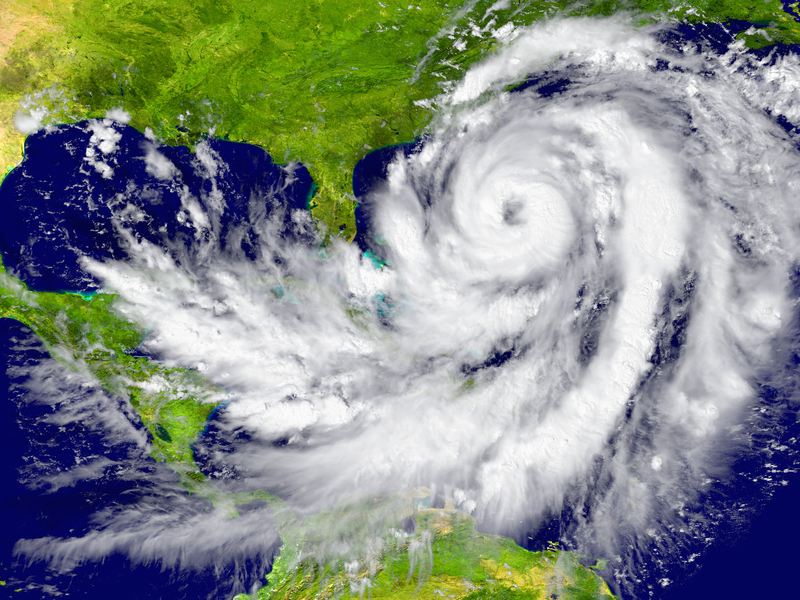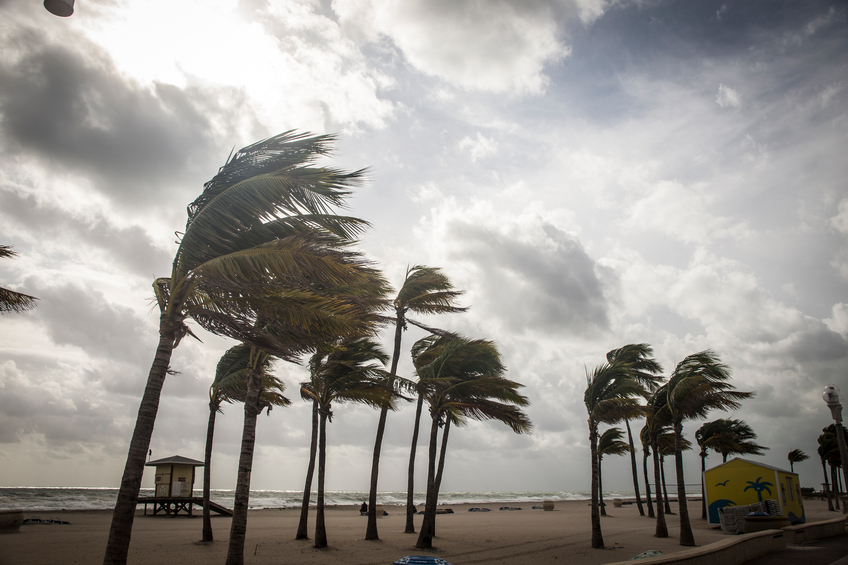After three years of below-normal hurricane activity — and 10years without a major hurricane (Category 3 or higher) making U.S.landfall — the National Oceanic and Atmospheric Administration ispredicting a “near normal” hurricane season in 2016.
|Of course, there were two named storms before the official June1 start to the season: Alex, which formed over the far easternAtlantic in January; and Bonnie, a tropical storm that broughtheavy rain to parts of South Carolina in late May.
|With the season apparently off to an early start, and aprediction for more activity in 2016 than in recent past years, isthe insurance industry prepared if a major hurricane strikes theUnited States, or has it grown complacent after enjoying 10 yearswithout a major U.S. hurricane and three years without asignificant tropical cyclone (Sandy in 2012)?
|From a claims-paying standpoint, there is little doubt thathomeowners insurers and commercial property insurers are able torespond in the event of a major catastrophe.
|“Insurers are prepared both logistically and financially forwhatever Mother Nature has to bring this hurricane season,”declares Insurance Information Institute President Robert Hartwig.“Claims paying capacity is at or near an all-time record high atthe primary level, at a record high in terms of reinsurance as wellas capital markets capacity through catastrophe bonds and othersuch instruments — there’s simply no question that, financially,the industry is prepared.”
|Hartwig also dismisses the idea that insurers have becomecomplacent regarding hurricane risk.
|In a recent interview with PropertyCasualty360.com, A.M.Best Vice President Jennifer Marshall said insurers have maintainedan expectation of catastrophe losses as they have priced theirproperty book, and added national insurers addressed theirconcentrations in riskier coastal areas earlier in the 2000s.Marshall also said widely available reinsurance, driven in largepart by the continuing presence of capital from alternativesources, has allowed insurers to buy more reinsurance coverage oropt for lower attachment points.
|Homeowners’ insurers have also been seeing rate increases —although they have been moderating, from 7% in 2013 to 5.4% in2014 and about 4% in 2015, according to Moody’s.
|For commercial property insurers, the opposite has been true forrates. Duncan Ellis, U.S. property practice leader for Marsh, saysrates have been decreasing year over year, but generally speaking,the decreases are moderating. Ellis says insurers are indeed “wellprepared” to respond to a major catastrophic event, but he does addthat, with rates decreasing and attritional losses not abating,insurers are robbing catastrophe premiums to pay for ratedecreases.
|“I think sometimes you see that in loss ratios,” he says.“Companies operating at an 85% or 90% loss ratio in a non-cat yearworries me. One could argue they should be in the high 70s in anon-cat year.”
Related: Like Clockwork, Litigation Is Sure to FollowHurricanes
Click here to view our full coverage on disasterrisk and recovery for Hurricane Season 2016.
||
After Hurricane Andrew hit Florida in 1992, the insurancemarket faced disruption as insurers re-evaluated exposures. (Photo:iStock)
|Louis Gritzo, vice president and research manager at Johnston,Rhode Island-based FM Global, likewise says commercial property insurersare prepared for a major catastrophe in terms of being wellcapitalized, but he says, “The real question is one of underwritingdiscipline. When these events hit, that’s when the true colors ofthis discipline will show.”
|Marsh's Ellis says while insurers seem “a little nervous aboutpricing,” they are still doing their homework on the underwritingside — making sure they have their modeling done correctly andgetting out to look at and assess locations. He also points outthat while there is a “sense of worry” about rate levels, thecurrent market is not like the destructive soft market of, say, thelate 1990s.
|For one, underwriting models are more developed, and the use ofanalytical tools allow underwriters to drill further down intoindividual risks than they were able to in the past. Also, he notesthat insurers are still trying to achieve an underwriting profitrather than using money on a cash flow basis, where they rely oninvested premiums to allow them to operate at an underwritingloss.
|The Sunshine State
Florida, of course, is no stranger to property catastrophe riskor the impact a major cat can have on the property insurancemarket. After Hurricane Andrew in 1992, the market faced disruptionas insurers re-evaluated exposures. The homeowners insurancelandscape has gone through a series of changes since then, with thestate’s intended insurer of last resort, Tallahassee-based Florida CitizensProperty Insurance Corp., formed in 2002. It ballooned torepresent more than 20% of of the market by 2011, according to arecent Fitch Ratings report, “Florida Homeowners Insurance MarketUpdate.”
|Since 2011, however, the state has made efforts to manageFlorida Citizens’ exposure base through depopulation efforts. Theresult has been the removal of more than 1.3 million homeownerspolicies from Florida Citizens, and transitioned to Floridaspecialist insurers. As of 2015, Florida Citizens’ market share wasdown to 6%. Florida Citizens’ risk profile has improvedconsiderably, Fitch notes, thanks to low catastrophe losses overthe last decade and its risk-reduction efforts.
|The story for the Florida specialists that have assumed policiesis a bit more unclear, mostly because these companies have yet tobe tested by a major catastrophe, Fitch adds.
|Jim Auden, managing director at Fitch, says these companies,like Florida Citizens, have done very well in recent years in aloss-free environment. Some of the public companies have grown alot, although he notes they do not have the capital base thatlarger national writers have. Auden points out the variation amongthe Florida specialists: Some have under $50 million in surplus,others have grown to around $400 million to $500 million, and arepublic with better access to capital should an event occur.
|“You wonder, in an event, how they’ll hold up,” he adds.
|Still, as both Auden and Hartwig of the Insurance InformationInstitute note, these carriers have to pass certain tests with theFlorida Office of Insurance Regulation in order to take policiesout of Florida Citizens. Hartwig says, “I think [the Florida OIR]knows it would be an embarrassment of titanic proportions were theyto approve carriers to take out policies only to see them in anevent, that can fully be anticipated, then fail.”
|The Fitch report notes 5 of the 10 largest direct writers inFlorida homeowners business are in the Florida specialist group andare subsidiaries of public holding companies: Universal InsuranceHoldings Inc.; Federated National Holding Company; HCI Group Inc.;Heritage Insurance Holdings, Inc.; and United Insurance HoldingsCorp.
Related: Insurance Gurus and Consultants Offer Hurricane-PreparationWisdom

Large national insurers have worked to reduce their coastalmarket concentrations over the past decade. (Photo:iStock)
|As far as whether the Florida market can withstand the next bigstorm, the report says, “The state’s population and coastalproperty exposure continue to grow at a rapid pace since the mostrecent landfall in 2005. While the overall Florida market is betterprepared to meet obligations that would arise from a largehurricane event, many growing Florida property insurers have briefhistories, untested by a large loss event, which createsuncertainty as to how these firms respond to the next inevitablehurricane.”
|Fitch continues, “Limiting factors that influence ratingsinclude relatively small size and scale, concentrated product andgeographic profiles, heavy reliance on third-party reinsurance andconcerns regarding capital adequacy given catastrophe eventexposure.”
|Adds Fitch's Auden: “It’s not just having capital left after astorm — do you have enough to stay in business and live to seeanother day?”
|State of the market
All told, the industry is in a strong position to respond to amajor catastrophe event in the United States
|Hartwig notes insurers did “quite well” in the active hurricaneyears of 2004 and 2005, “and the ability to model risk is betternow, a decade later. The diversification and spread of risk isbroader today than a decade ago, in part because of greater use ofreinsurance, but also greater use of capital markets.”
|Large national insurers have worked to reduce their coastalmarket concentrations over the past decade, and while coastalmarket capacity has rebounded, Hartwig says it is more about otherprivate carriers filling voids as the large national carrierspulled back, as opposed to carriers rolling the dice with highconcentrations again.
|Still, there is plenty of competition for many types of coastalproperty risks. Professional Insurance Agents of New JerseyPresident-elect Donald F. LaPenna Jr., of Donald F. LaPennaAssociates, in Cranford, N.J., says he sees an aggressive propertymarket for both homeowners’ and small commercial property risks.“There’s more capacity than we’ve ever had before, in all areas,from reinsurance, to cat property, etc. There’s so much more moneyout there [now].”
|LaPenna adds he has seen both new markets coming in to writecoastal risks and existing markets increasing their appetite. “Inmy eyes, they could be blinded,” he says. Catastrophes, he adds,“are going to happen again, as the cycle always turns, and wealways seem to be making similar mistakes every cycle.”
|Phil Gusman is a contributing editor toPropertyCasualty360.com.
|Related
Hurricane Lawyers and CPAs: Be Ready for theStorm
Atlantic hurricane outlook raised by Colorado Stateforecasters
|6.8 million homes at risk for hurricanestorm surge
|Are insurers prepared for Hurricane AndrewII?
|Click here to view our full coverage on disasterrisk and recovery for Hurricane Season 2016.
Want to continue reading?
Become a Free PropertyCasualty360 Digital Reader
Your access to unlimited PropertyCasualty360 content isn’t changing.
Once you are an ALM digital member, you’ll receive:
- All PropertyCasualty360.com news coverage, best practices, and in-depth analysis.
- Educational webcasts, resources from industry leaders, and informative newsletters.
- Other award-winning websites including BenefitsPRO.com and ThinkAdvisor.com.
Already have an account? Sign In
© 2024 ALM Global, LLC, All Rights Reserved. Request academic re-use from www.copyright.com. All other uses, submit a request to [email protected]. For more information visit Asset & Logo Licensing.








